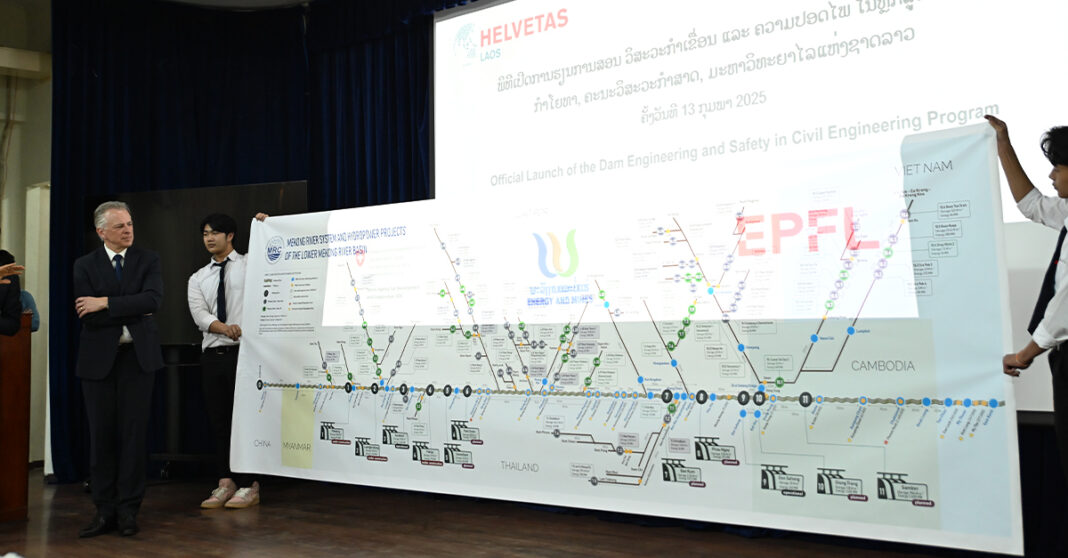The first-ever dam engineering course in Laos was officially launched on 13 February, marking a significant milestone in the country’s efforts to enhance dam safety and technical expertise. This course is the result of the intensive cooperation on dam safety between Laos and Switzerland, and a recent agreement between the National University of Laos and the Swiss EPFL, one of world’s top technology institutions.
In his opening remarks at the event, Bouathep Malaykham, Director General of the Department of Energy Industry Safety Management emphasized the critical role of hydropower in Laos’ economic and social development, stating, “Hydropower plays a crucial role in the economic and social development of Laos, providing a reliable and sustainable energy source for both domestic use and export. However, with great potential comes great responsibility. Ensuring the safety, efficiency, and sustainability of our hydropower infrastructure requires highly skilled engineers, researchers, and professionals. This new dam engineering course addresses that need, equipping the next generation with the technical knowledge and expertise required to design, construct, and maintain hydropower projects to the highest international standards.”
During the event, Ounla Sivanpheng, Vice President of NUOL, stated “Hydropower is essential to Laos’ progress, but with it comes great responsibility. Dam safety is not just an engineering challenge, it is a duty to protect people, the environment, and the economy for future generations.”
Ounla also acknowledged the DSTIA project, supported by the Swiss government through SDC and implemented by HELVETAS, as a crucial effort in strengthening dam safety expertise.
A key outcome of this project is the Dam Engineering and Safety course, developed with EPFL, alongside Applied Hydraulics and enhancements to related engineering subjects. Laboratory upgrades further ensure practical, hands-on learning.
This initiative aims to equip engineers with advanced skills in dam safety and risk management, promote hands-on experience through modern labs and industry collaboration, and strengthen partnerships between academia, government, and international organizations.
“Our goal is for Laos to become a regional leader in dam safety by 2030, a vision achievable through the dedication of our faculty, students, and partners,” said Ounla. “You [students] are pioneers in this field. Your expertise will shape the bright future of dam engineering in Laos.”
Meanwhile, Arno Wicki, Assistant Director General of the SDC, expressed Switzerland’s strong support for this initiative:
“Building a stronger pool of specialized local engineers is essential for ensuring dam safety and ultimately the safety of the populations living downstream. To the students here today, you represent the future of this partnership. The progress we celebrate today will only continue if bright and passionate minds like yours take the lead. Be curious, be bold and never stop learning. The knowledge you gain will allow you to further improve dam safety in Laos.”
This pioneering dam safety course represents a major step forward in developing a well-trained workforce linking theory, policy and practice, reinforcing Laos’ commitment to responsible hydropower development, dam safety, and energy sustainability.



